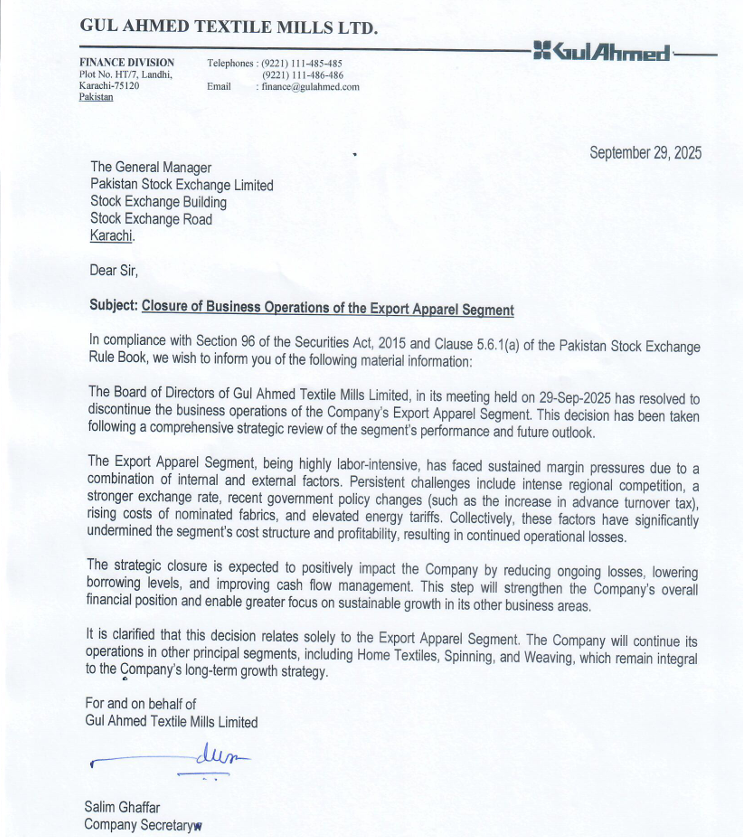Gul Ahmed Textile Mills shuts its Export Apparel Segment after a board decision on September 29, the company disclosed in a filing on Tuesday.
Strategic review finds sustained margin pressure from competition, exchange rate strength, tax changes, fabric costs, and energy tariffs
The company said a comprehensive review showed the segment could not overcome persistent headwinds.
Export Apparel is a labour intensive business and has faced intense regional competition that squeezed pricing power.
A stronger exchange rate reduced rupee revenues from foreign sales. Recent policy changes, including a higher advance turnover tax, lifted the tax burden.
At the same time, nominated fabric costs increased and energy tariffs stayed elevated.
Taken together, these factors undermined the cost structure and pushed the segment into continued operating losses.
Management concluded that the unit could not deliver acceptable returns under current market conditions.

Closure expected to curb losses, lower borrowing, and improve cash flows
Gul Ahmed said the strategic closure should immediately reduce ongoing losses. Lower cash burn will help the company cut borrowing and ease finance costs.
Improved cash flow management is a core objective, as the company seeks a stronger balance sheet and greater flexibility for investment.
With fewer drains on working capital, management plans to channel resources toward areas that demonstrate resilient demand and better profitability.
The company framed the move as a targeted step to protect shareholder value while preserving operational strength in healthier businesses.
Decision limited to Export Apparel only, while Home Textiles, Spinning, and Weaving remain central to long term growth
The company emphasised that other principal segments will continue without interruption.
Home Textiles, Spinning, and Weaving remain integral to the long term strategy and are expected to anchor production and exports.
Orders, customer commitments, and supplier relationships in these lines will proceed as planned.
Gul Ahmed said it will keep modernising operations and pursuing efficiency gains in its continuing businesses.
Management added that the realignment positions the group to focus on sustainable growth, disciplined capital allocation, and product lines where the company holds clear competitive advantages.




